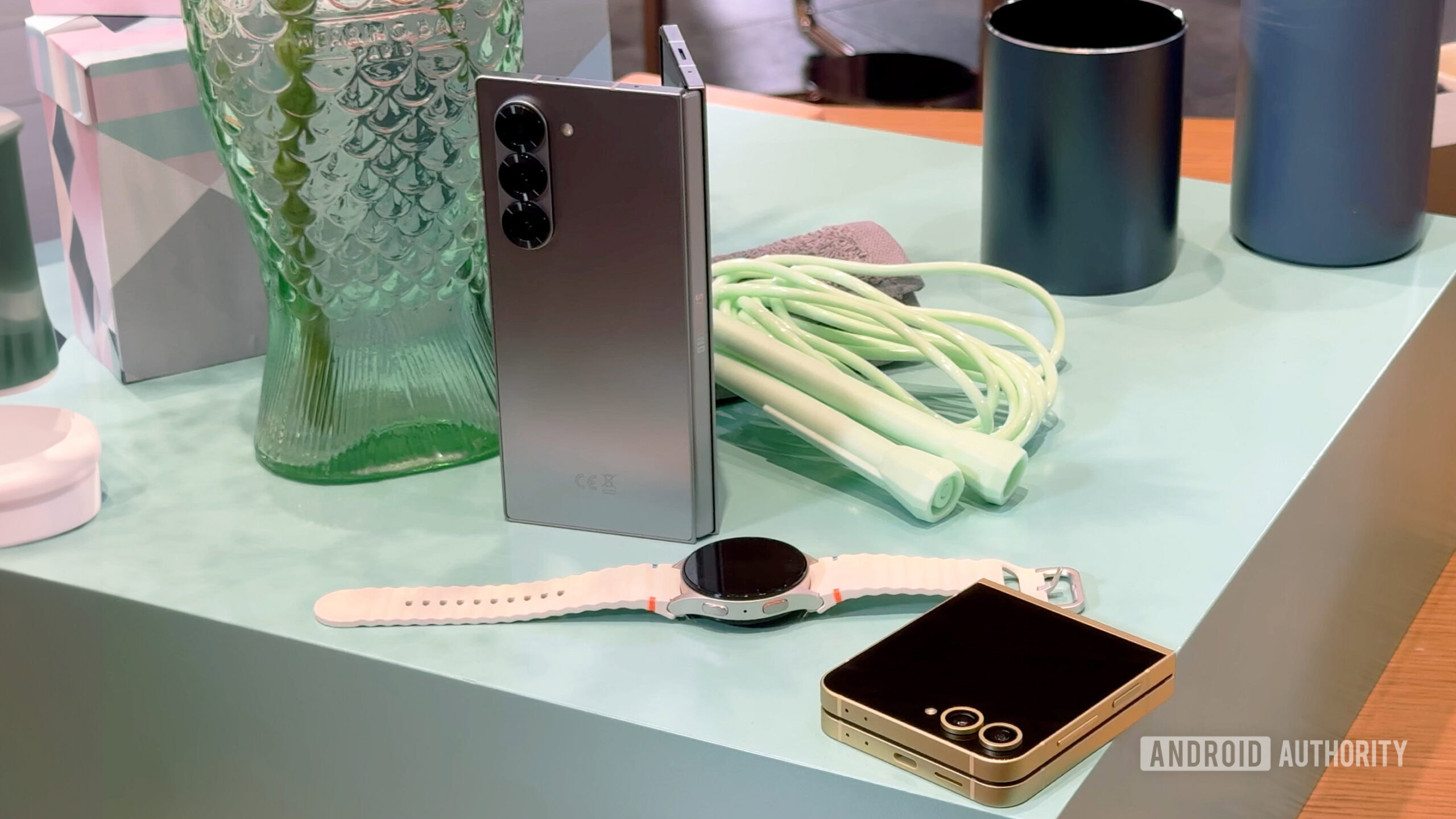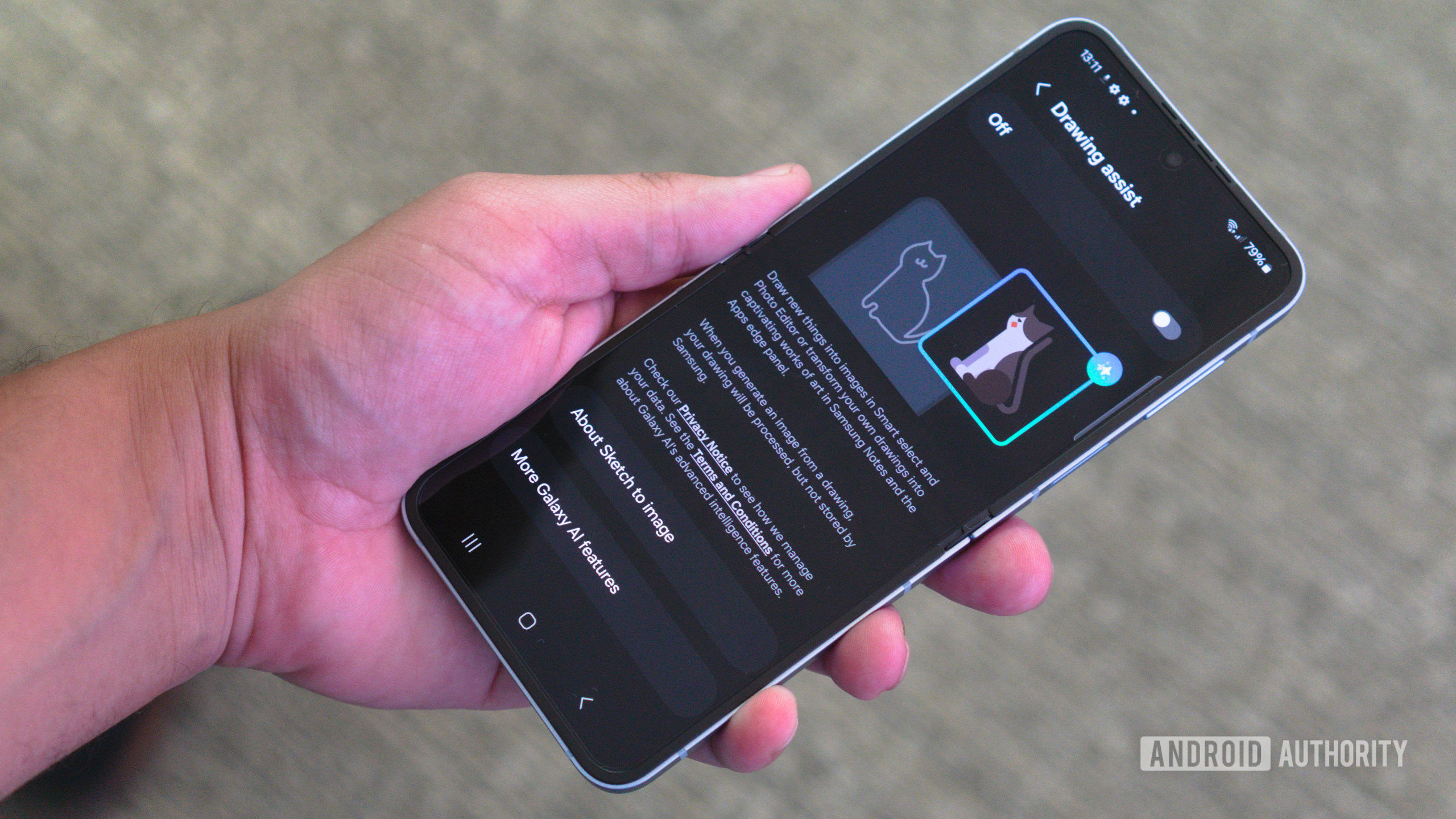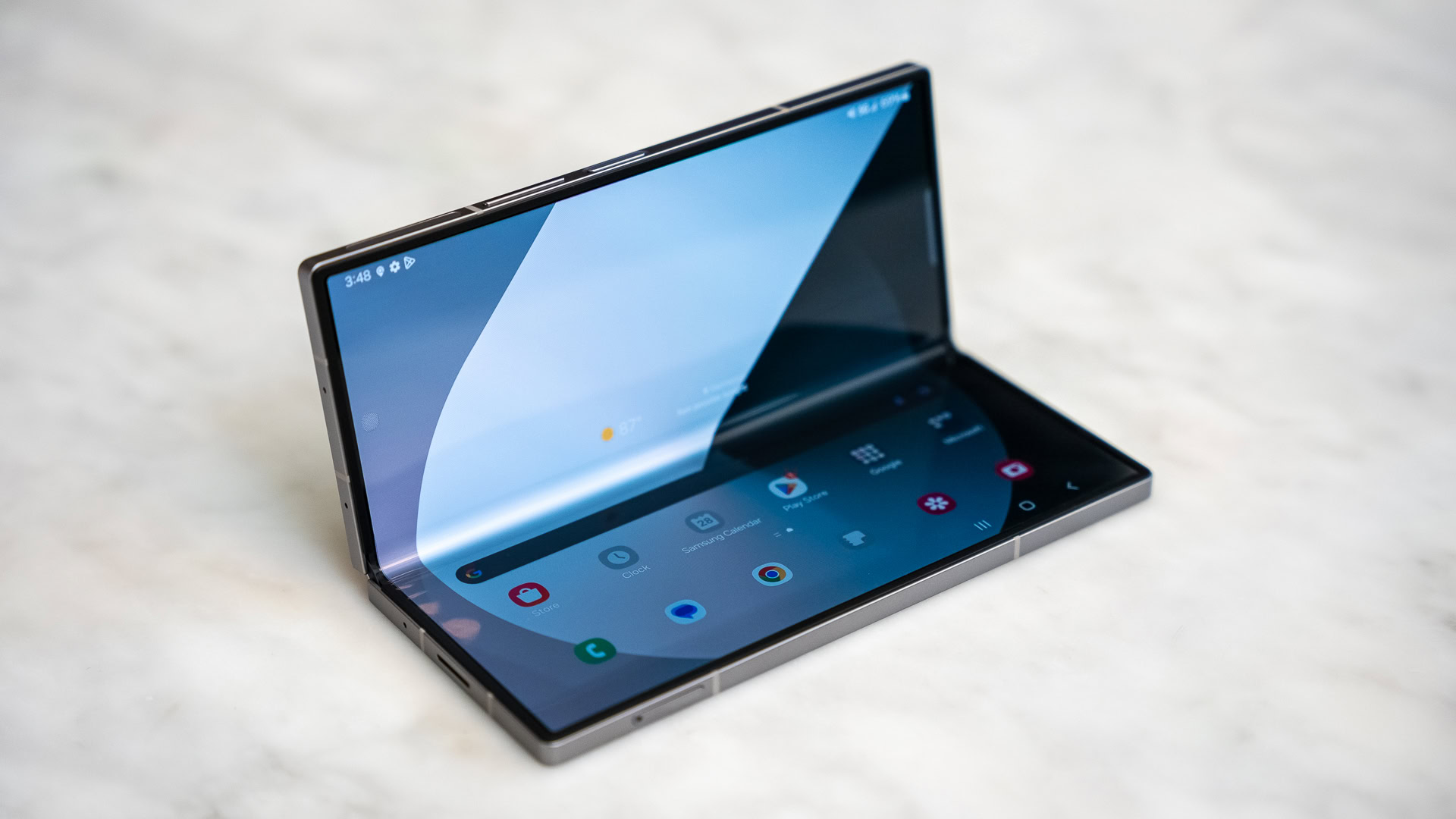Affiliate links on Android Authority may earn us a commission. Learn more.
No, Samsung, I don't want to pay for tomorrow's features today
Published onJuly 17, 2024
Once upon a time, smartphones shipped with a full slate of features. When a company touted a feature during its big, flashy keynote event, it would be available immediately, or at least as part of a day one update. Now, giants like Apple, Samsung, and Google have taken to talking about AI-powered features that are nowhere near ready when you first get your new phone.
Don’t worry, though, they’ve promised us that the features are “coming soon.” In the meantime, you’ll have to pay extra for a phone with the latest AI-ready hardware. Are we all just okay with that?
Money for nothing

The short answer is no. We shouldn’t be okay with any of that. Why should we accept a $100 price increase on a phone just because a company has promised extra features down the road? Would you be willing to pay an additional $100 at a restaurant if you knew your next meal would taste even better? No, you’d probably just come back when you thought a better meal would be ready.
Yet Google bumped the price of its Pixel 8 series by $100, Apple raised its iPhone 15 lineup by the same (even though the base models won’t get Apple Intelligence at all) and could charge even more for the iPhone 16 series once it does come with AI onboard. Now Samsung has bumped its Galaxy Z Flip 6 and Galaxy Z Fold 6 by $100 to match the hike on the Galaxy S24 Ultra. But don’t worry — the AI-powered features that played starring roles in their keynotes will be available soon, so it’s money well spent.
If I'm spending an extra $100, my phone has to be kitted out on day one.
Honestly, maybe the forthcoming Apple Intelligence, Galaxy AI, and Gemini features will be worth the extra money we’re paying for them. After all, Google said that its best features would be reserved for the Pixel 8 Pro since it has enough power to handle the demands of AI. Apple pretty much did the same when it declared that Apple Intelligence would only be coming to the iPhone 15 Pro and Pro Max in addition to the M-powered MacBooks and iPads. If you don’t have any of those devices, sorry, no AI for you, but you can still pay the extra $100.
On the bright side, we have seen some long-promised AI features reach devices. Circle to Search is a noticeable improvement on Google Lens, and Magic Editor is a much more refined version of Magic Eraser. Even a few generative text options have arrived, with Gemini-powered Smart Reply taking up residence in Google’s Gboard. However, most of the AI features that brands can point to right now are ones like the ability to generate wallpapers — sure, it’s AI, but is it really that exciting?
Are you willing to pay more for on-device AI?
So far away

As if vague promises of powerful features weren’t enough, we’ve already seen what passes for “soon” in this industry. Google launched its Pixel 8 Pro with a temperature sensor that couldn’t measure humans, but it promised that support would come soon. It took four months. Google also promised Zoom Enhance for the Pixel 8 Pro, which would let us live out our CSI security footage dreams, but it’s still not here eight months later. Samsung finally giving its Galaxy Z Flip series a more useful cover screen — er, Flex Window — experience took five generations. Even Apple’s annoying notch stuck around for several years until the Dynamic Island took over. So, forgive me if I’m a little skeptical about what passes for soon. If I had $100 every time I was promised that features would be available soon, I wouldn’t have to worry about the price increases.
When it arrives, premium iPhone customers will be paying to beta test Apple Intelligence.
Granted, Apple did say that its Apple Intelligence beta access would open up this fall, probably in line with the launch of the iPhone 16 series. Annoyingly, it’s still considered beta access, which means that users with the most expensive iPhones are basically stuck as product testers for the time being. Still, it’s a decently close date, and yet I’m probably more excited for the arrival of widespread RCS support in Messages. At least I’ve tried that one as part of the iOS 18 beta, and I can say that it works well. On the other hand, Apple Intelligence could shake out much like Google’s early AI summaries have — a bright idea, but one with many kinks to iron out.
Why worry?

Now, there’s every chance you’re not too worried about the current costs of bringing AI to smartphones. After all, you’re perfectly happy with your current phone and don’t need to upgrade. That’s a good thing — if you have a 5G-capable iPhone or your Android device is still getting updates, you’re probably fine.
However, companies are making my job as a reviewer much harder without critical pieces of software ready to go. On the one hand, whatever — you probably shouldn’t take my word as gospel since you might use your phone for something completely different from what I do. On the other hand, though, it means that I can’t pick out the flaws that reviews can often serve as warnings for. Right now, I can only say that AI features are forthcoming; I can’t tell you whether they’re underbaked or great.
And yet, there’s nothing that you or I can realistically do about it. I’ll continue to tell you the good and bad about a phone as I use it, you’ll continue to wonder why my review didn’t touch on a feature that only launched months later, and Samsung, Google, and Apple will happily take our money in the meantime. Perhaps the best thing we can do is wait for these exciting, AI-powered features to arrive before we declare them good or not and spend our hard-earned money.

Excellent build quality
Class-leading update commitment

Sizeable cover display
Great performance